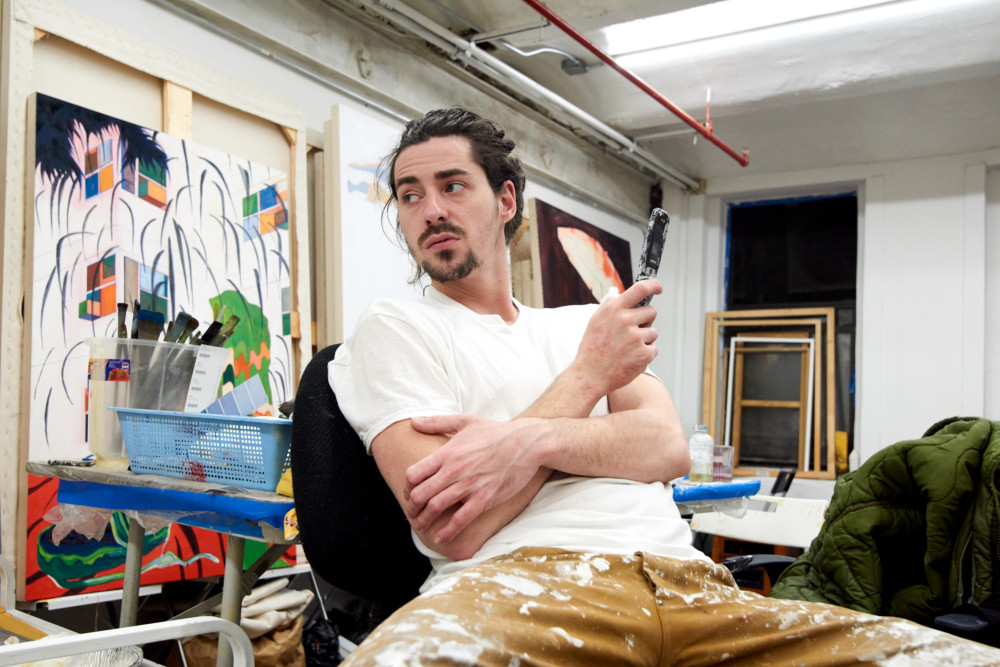By Scott Enman
Tribune Interactive
WWR Article Summary (tl;dr) In an age where everyone seems glued to their smartphone, the flip phone is turning into a statement of protest and individuality.
NEW YORK
Exactly one year ago, Roman Cochet swapped his $500 iPhone 7 for a $30 LG flip phone.
Overwhelmed by constant alerts, Cochet felt his time was disrupted, his creativity drained. His flip doesn’t do email, Instagram, Facebook, Uber or news alerts. The 30-year-old Parisian painter, who lives in Brooklyn, said he regrets nothing.
“With a smartphone, you spend so much time texting, talking, in constant communication, that you don’t have time to do anything else,” Cochet said. “I’m way more focused now on what I’m doing. I’m less distracted.”
In an age where everyone seems glued to their smartphone, the flip phone is turning into a statement of protest and individuality. These relics of the 1990s, still in wide use as disposable “burners” by crooks and FBI informants, are prized by a wider population for their simplicity, durability and affordability, not to mention their low-tech appeal to the burgeoning #DeleteFacebook crowd.
Wait Until 8th, an organization that urges parents to delay their children’s smartphone use until eighth grade, has an ad that reads, “Need to get in touch with your child? Buy a flip phone.” The group has collected roughly 10,000 signatures from all 50 states in March.
About 24 million Americans own a non-smartphone, according to Forrester Research. It’s still enough of a novelty that celebrity flip phone users are immediately outed on Twitter and Instagram when spotted in the wild.
Flip phone users include Oscar winners Daniel Day-Lewis and Frances McDormand, pop star Rihanna, NFL quarterback Andrew Luck, billionaire investor Warren Buffett and Vogue editor Anna Wintour.
Steve Van Dinter, Verizon’s public relations manager for the Great Lakes market, said there’s definitely a “subset” of customers who buy flip phones, primarily those who work outdoors and need a device that can withstand drops, corrosive materials, water and other extreme conditions.
Verizon wouldn’t continue to stock them, he said, if there wasn’t “consistent demand.” The latest models have access to 4G LTE, HD voice and the ability to create a mobile hotspot for up to 10 devices.
Cochet said some of his artist friends dismiss his choice of phone as a hipster affectation, an artist’s asceticism. But his studio, scattered with paint cans and empty beer bottles, is now void of a smartphone’s distractions.
The phone itself is a throwaway object smeared with paint, the keypad indiscernible.
Cochet said he’s also become more connected to other people (he remembers the bodega cashier’s name), and more present in the moment. “I’m way more conscious of my surroundings than if I was on my screen,” he said. “I have friends who struggle looking at a subway map. I think people should throw their phone away. It would be good for them.”
Cochet admits there are sacrifices. The phone has a shoddy camera and no group texting or ride-sharing apps, but he copes just fine. No Uber? A car service is on speed dial. No Venmo? He always has cash. And Cochet is by no means entirely disconnected. He uses his laptop at night to check email, browse the web and watch Netflix. (He’s a big fan of “Black Mirror.”) He listens to podcasts on a $25 MP3 player.
“I’m dismantling what the iPhone can do into different objects,” he said.
Jim Thatcher, 37, a professor of geospatial technologies at the University of Washington Tacoma, switched to a flip phone a year ago after his smartphone broke.
“I tried to go without a phone for about three weeks,” he said. “However, with two kids, there’s an expectation that I’m reachable if something goes wrong, so I ordered the cheapest Verizon flip phone I could find on eBay. I’ve had it since then.”
Thatcher is active on social media but he uses devices other than his phone to access his accounts. “I wanted to be more purposeful in how I engaged in my day-to-day life,” Thatcher said. “I found myself staring at my phone more than I was out hanging with my kids.”
If ditching your smartphone completely feels too extreme, there’s an in-between option: the Light Phone, the self-described “anti-smartphone phone.”
The first Light Phone went on sale in 2015. The latest version is in testing now and slated for release next year. It’s just as pleasing to look at as the iPhone, but reduces your apps to a handful such as calls, messaging, GPS, contacts and ride-hailing. It won’t have social media, a browser or email.
More than 4,000 people have pre-ordered the Light Phone 2, according to company CEO Kaiwei Tang. He expects that figure to increase to more than 10,000, which is the number of people who bought the original Light Phone.
___
ABOUT THE WRITER
Scott Enman is the Digital Editor of the Brooklyn Daily Eagle. He has contributed to Men’s Journal, Mixmag and Eight by Eight among other publications.














































































































































































































































































































































































